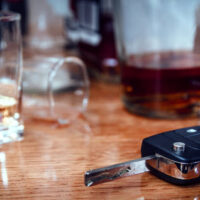Kinds of Driver Negligence in Car Crash Cases

In 2021, car crashes killed or seriously injured over five million Americans. Driver error, usually one of the four kinds of driver error discussed below, caused over 98 percent of these wrecks. Freak weather events and defective products caused most of the rest.
If the driver error was negligence, or a lack of care, a Carlsbad personal injury lawyer can obtain substantial compensation in court. This compensation usually includes money for economic losses, such as medical bills, and noneconomic losses, such as pain and suffering.
Decision
Traffic conditions change quickly, even on crowded SoCal highways. Motorists who are not in top mental condition are unable to make quick and accurate decisions, such as the amount of time before a light changes or the distance between their vehicles and other objects. Some form of driver impairment usually impairs decision making ability. Examples include:
- Alcohol/Drugs: Alcohol, along with most drugs, is a depressant that clouds the mind. Delayed or impaired judgment behind the wheel could be fatal. Some drugs are stimulants that also impair judgment, but in the other direction. People who are edgy and suspicious are also unable to make quick, accurate judgments.
- Fatigue: Drowsiness and alcohol affect the brain in similar ways, specifically regarding judgment ability. Driving after eighteen consecutive awake hours is like driving with a .05 BAC level, which is above the legal limit for some California drivers.
- Distraction: Many people multitask their way through their work days. So, they assume they can do the same thing behind the wheel. However, driving itself involves multitasking. Drivers must continually monitor vehicle performance and traffic conditions. Outside activities, such as using a hands-free cell phone, are too much extra work for the brain to handle.
Operator distraction may involve third party liability. For example, if a distracted Uber driver caused a crash, an Oceanside personal injury lawyer can usually hold the company responsible for damages, under the respondeat superior rule.
Recognition
Operator impairment also affects the senses. Drunk, sleepy, and distracted individuals often have muscle coordination and other such issues.
Aggressive driving, mostly speeding, could also affect recognition ability. Quite simply, speeding drivers have less time to react to changing situations. Stopping distance illustrates this point.
At 30mph, stopping distance (the combination of reaction time and braking time) is about six car lengths. At 60mph, stopping distance multiplies to eighteen car lengths. Environmental, vehicle weight, and other factors could increase stopping distance even further.
Performance
Aggressive driving also affects driver performance. Speed not only increases the risk of a collision. Excessive velocity also increases the force in a collision, according to Newton’s Second Law of Motion.
In other words, excessive speed transforms a non-injury fender-bender into a serious injury collision.
Other kinds of performance-affecting aggressive driving include turning unsafely, making an illegal turn, and ignoring a traffic control device.
Non-Performance
The duty of care begins before the ignition starts. Drivers must visually inspect their cars and look for mechanical issues, such as non-working lights. Additionally, if the dashboard warning lights indicate a problem, the owner must immediately address that problem.
Count on a Detail-Oriented San Diego County Lawyer
Injury victims are entitled to substantial compensation. For a free consultation with an experienced personal injury lawyer in Carlsbad, contact the Pursley Law Firm. You have a limited amount of time to act.
Source:
injuryfacts.nsc.org/motor-vehicle/overview/introduction/

